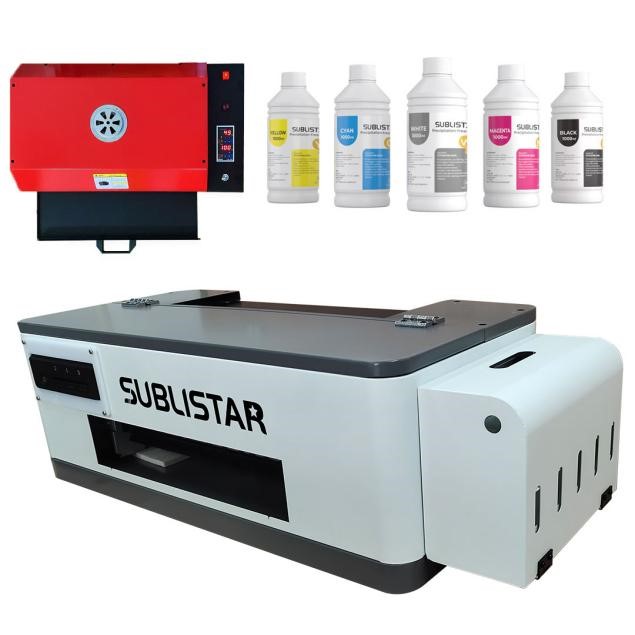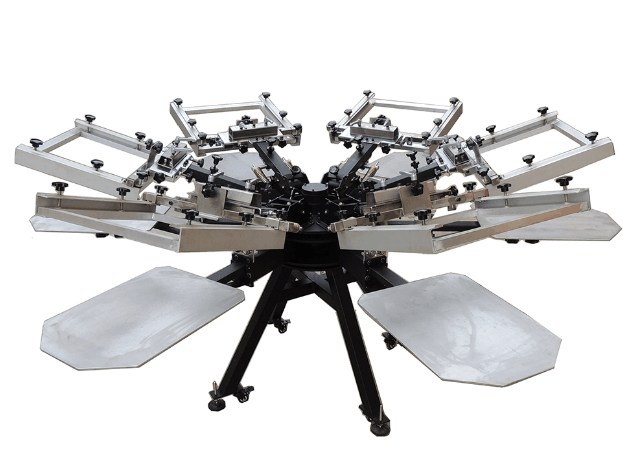DTF printing and screen printing are types of printing that are used when printing on different types of clothing.
Which type of printing is better depends on the purpose of use.
If it is a large series of printing, and the style and quality of the print on the clothes is not too important, the most suitable printing method is screen printing.
If it is a small print run, and the design of the print on the garment has very high requirements, then the best printing method is DTF printing.
What Is DTF Printing?
DTF printing requires the use of a DTF printer, a dithering machine and an oven at the same time.
DTF stands for digital transfer directly to film, so the design will be printed on the PET film via a DTF printer, then a dithering machine will be used to apply the hot melt compound evenly in powder form on the PET film.
Finally, this material is passed through an oven at a high melting temperature, to be fused together with the design.
The last step is the transfer of the design on the PET film to the clothing fabric with the use of a heat press.

What Are The Advantages of DTF Printing?
DTF printing can be printed in one piece to fully realize the concept of personalized customization.
The steps are simple and the process takes less time and effort.
This type of printing is environmentally friendly with less waste and pollution, and the PET film can be recycled and reprocessed for reuse after transfer.
DTF supports design transfer to a wide range of fabrics, all types of cotton and linen fabrics on the market, natural fibers or man-made fibers can be perfectly transferred.
DTF printing after transfer to the fabric gives a soft touch feeling, does not fade, is resistant to washing, machine and hand washing will not cause the pattern to fall off.
This type of printing supports the direct transfer of various colors to the fabric without any restrictions, without other processing, and the heat press can be directly use for pressing.
The price of the DTF printer has an advantage, and the volume and weight compared to screen printing are more favorable, it is very suitable for small and medium, as well as large enterprises for production use.
What Are The Disadvantages of DTF Printing?
The disadvantage of DTF printing is that it is not efficient enough to process tens of thousands of homogenized orders, and as the orders increase, the revenue becomes smaller.
Another thing is that DTF printing will have different results if you choose a different powder.
For example in the summer, try to choose a breathable film and a breathable powder, to avoid a large area of print on the T-shirt, which affects the comfort of wearing.
What Is Screen Printing?
Screen printing is a method of printing using a screen made from synthetic fibers such as polyester and metal fibers such as stainless steel.
Screen printing is a type of perforated printing in which ink is printed through the opening of the screen onto the object who is being printed.
There is a wide variety of materials that can be printed, and it is said that all materials except water and air can be printed.

What Are The Advantages of Screen Printing?
Screen printing is an extremely flexible printing method that can print on both flat and curved surfaces.
Curved surfaces, however, require specially adapted auxiliary printing platforms.
Many different types of signs and posters can be printed, and clothing too.
Screen printing prints well, with bright, vibrant colors once the ink hardens.
And if special materials are added to it, it can achieve metallic flake looks, faux brushed leather finishes, slightly raised areas, glow-in-the-dark effects and more.
And the printing effect is long-lasting.
What Are The Disadvantages of Screen Printing?
Screen printing is a very expensive option when producing small orders.
First of all, the initial screen printing process can be complicated and time-consuming, with high time and labor costs.
Special treatment is also required for dark colored garments, which require the use of white or light gray under all or part of the design.
This is because screen printing inks are not completely opaque, some are less and some are more opaque than others.
The base treatment ensures that the colors remain consistent with the initial colors of the design.
Screen printing, because it uses stencils and a screen, has average print results when printing fine patterns and smaller text.
Screen printing is generally preferred by larger clothing manufacturers, where more colors to print means more investment.
In summary, DTF printers are more suitable for more flexible personalized small and medium orders and do not require excessive labor and processing.
The preparation of the design is computerized, as is the operation of the machine, so it can be done with a smaller number of employees and you can accept personalized orders from all over the world.
Screen printing is more suitable for the needs of large manufacturers, it can produce large orders, in coordination with the production of pre-production plates, film production and other production steps, but also to achieve their own expectations of benefits.
Therefore, we cannot say which of these two printing techniques is better, only which is more suitable for our own scope of business and which will bring us more income in business.